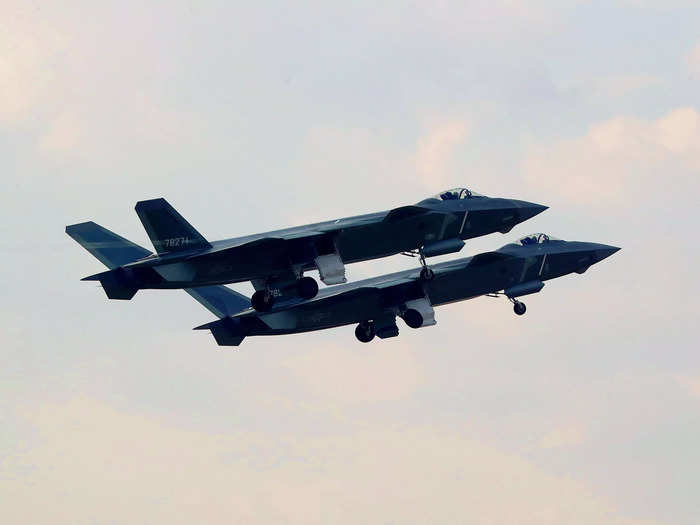SOURCE: AFI

China’s rapid ramp-up of J-20 production, with estimates reaching 120 units per year, signifies their ambitious goal of fielding a massive fleet potentially exceeding 1,000 aircraft. This has security analysts worldwide, particularly in neighboring India, closely watching the development.
The Chengdu J-20 is a fifth-generation, twin-engine fighter jet boasting the title of the world’s biggest in its class. Its size, exceeding both the Su-57 and F-22, translates into a potentially significant advantage – range.
Experts speculate that the J-20’s internal fuel capacity, estimated at 11,000 kg, allows for missions deep into Indian territory without relying on external fuel tanks. This, coupled with a speculated combat range of 2,000 km, raises concerns for Indian defense strategists.
The J-20’s sizable internal fuel capacity also suggests its potential to carry air-launched cruise missiles. This capability, if confirmed, could pose a threat to targets deep within India, including major cities like Delhi and Kolkata.
Adding to the J-20’s potential is its focus on stealth technology. This, along with advanced sensors, information fusion capabilities, and network connectivity, could pose a significant challenge to air defense systems.
While China’s J-20 program is undoubtedly impressive, some aspects remain unclear. The true capabilities of the Chinese-made WS-15 engine, expected to equip all J-20s, are yet to be fully revealed. Additionally, the effectiveness of the J-20’s stealth technology in real-world scenarios remains to be tested.
India is closely monitoring China’s J-20 development and is likely to take appropriate steps to address any potential security threats. This could involve advancements in its own air defense systems, strategic partnerships, or potentially acquiring new generation fighter jets.
The rapid expansion of China’s J-20 fleet will undoubtedly alter the balance of power in the Asian region. India’s response to this development will be crucial in ensuring regional stability.